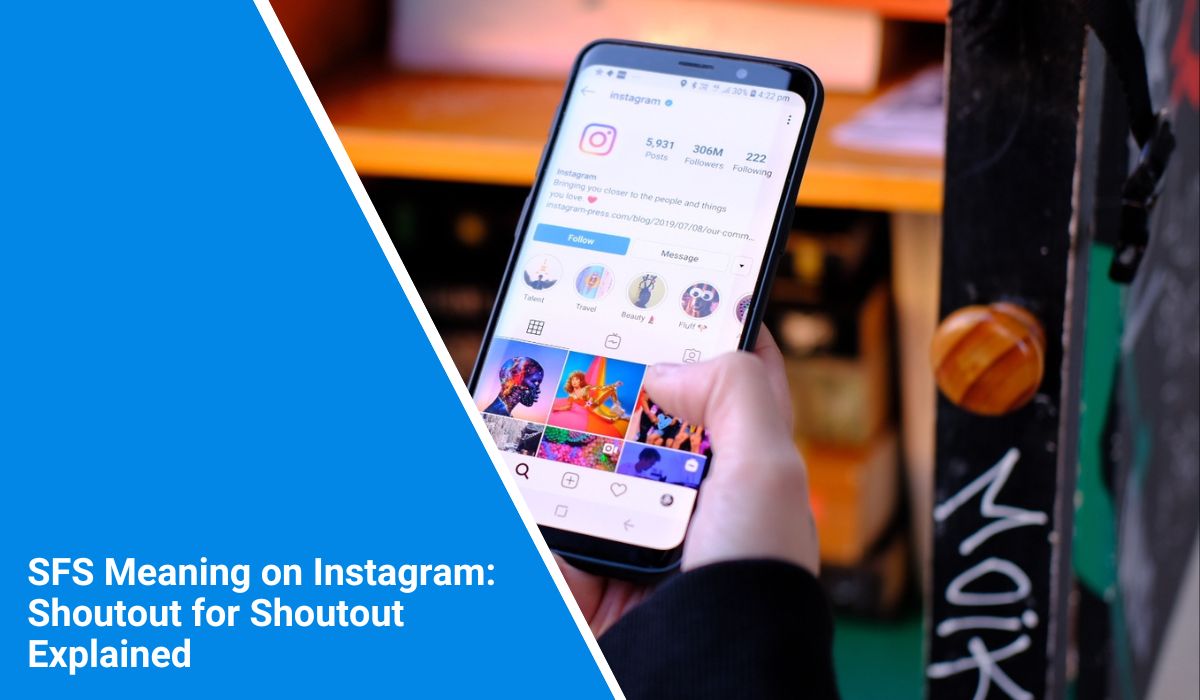Instagram is full of short phrases, hashtags, and acronyms that can feel confusing if you’re new to the platform. One of those is SFS, which often shows up in Stories, comments, or direct messages — but it’s not always clear what it means.
This article is for anyone who’s seen “SFS” and wasn’t sure if it meant “follow,” “spam,” or something else. Whether you’re a small creator, a teen, a parent, or just curious, here’s what SFS means and how it’s used on Instagram.
What Does SFS Stand For?
 SFS is an acronym that most commonly stands for Shoutout For Shoutout. It’s a way for Instagram users to promote each other’s accounts in hopes of gaining more followers.
SFS is an acronym that most commonly stands for Shoutout For Shoutout. It’s a way for Instagram users to promote each other’s accounts in hopes of gaining more followers.
Depending on the context, SFS can also mean:
- Spam For Spam – where users like or comment on each other’s posts repeatedly
- Snap For Snap – on Snapchat, not Instagram, meaning photo swaps
On Instagram, SFS usually appears in Story text, captions, bios, or DMs asking if you’d like to trade shoutouts.
How Does SFS Work on Instagram?
The idea is simple: two users agree to promote each other by sharing their profiles with their followers. This is usually done in Stories. One person posts a screenshot or tag of the other’s profile and encourages their followers to check them out — and the second person does the same in return.
Sometimes, users may also include a short message like “Follow my friend @username! SFS ❤️” or use an SFS-themed sticker or hashtag. It’s often informal and quick — no contract, just mutual support.
For small or new accounts, this can help boost visibility. However, it works best when the two accounts have similar audiences or themes (like photography, memes, or lifestyle).
Why Do People Use SFS?
Many users participate in SFS to grow their audience. It’s often used by younger users, small creators, or themed pages trying to build up an early following.
Common reasons people use SFS:
- To gain more followers
- To support a friend’s account
- To increase post engagement
- To join a niche community trend
- To promote mutual appreciation
It’s like a modern version of word-of-mouth marketing — one person tells their followers to check out another user.
SFS vs F4F vs Shoutout: What’s the Difference?
These terms are all about boosting visibility, but they mean different things.
| Term | Meaning | Mutual? | Common Format |
|---|---|---|---|
| SFS | Shoutout For Shoutout | Yes | Stories or posts |
| F4F | Follow For Follow | Yes | DMs or captions |
| Shoutout | Single promo of another user | Not always | Story or reel mention |
- Shoutouts can be one-way and often used to show appreciation
- SFS involves both users actively promoting each other in Stories or posts
Is SFS Worth It? Pros and Cons
Like many Instagram tricks, SFS has both benefits and drawbacks. It’s quick and easy, but may not always work long-term.
Pros:
- Helps small accounts grow
- Builds early exposure
- Encourages networking with similar users
- Free way to gain visibility
Cons:
- Can bring inactive or uninterested followers
- Sometimes seen as spammy
- Doesn’t always help with true engagement
- May reduce content quality if overused
If you’re trying to build genuine interaction or personal brand trust, SFS should be used with intention—not just randomly.
Final Thoughts: Should You Use SFS?
SFS can be helpful if you’re just starting out and want to connect with similar accounts. It’s especially useful among friends or niche communities. But it shouldn’t replace real content strategy or meaningful engagement.
Use SFS with people you trust, and avoid overdoing it. For long-term growth, focus on consistent posts, real conversations, and creative value. If you do that — with or without SFS — your following will come.



